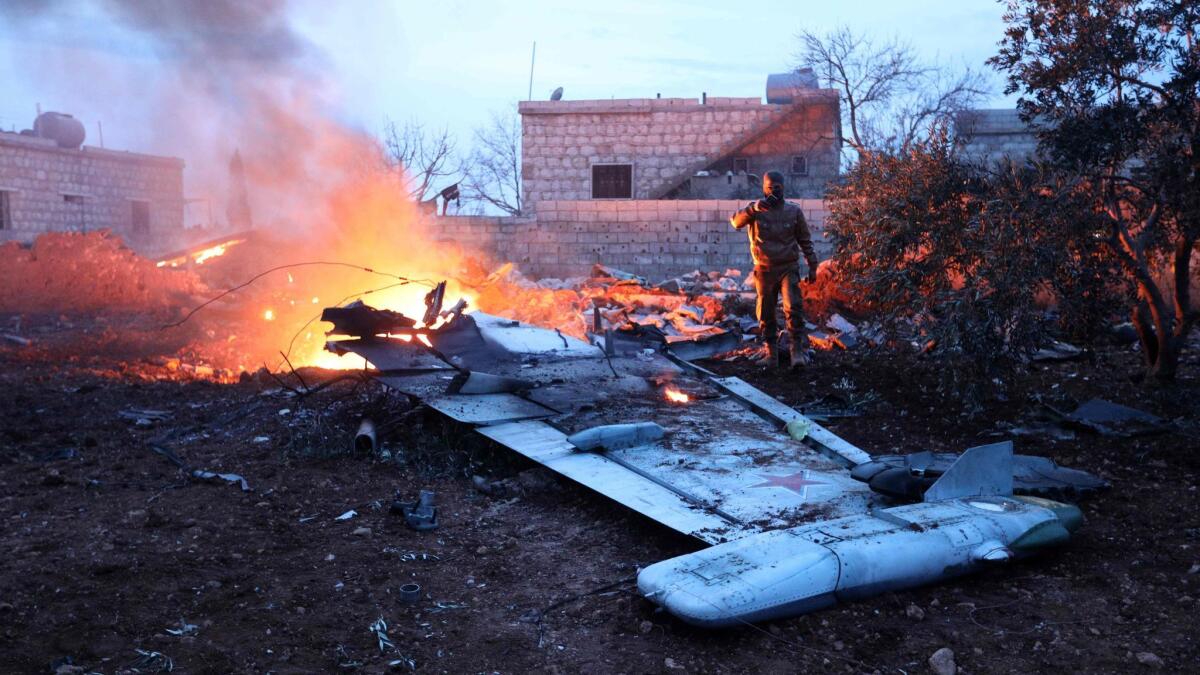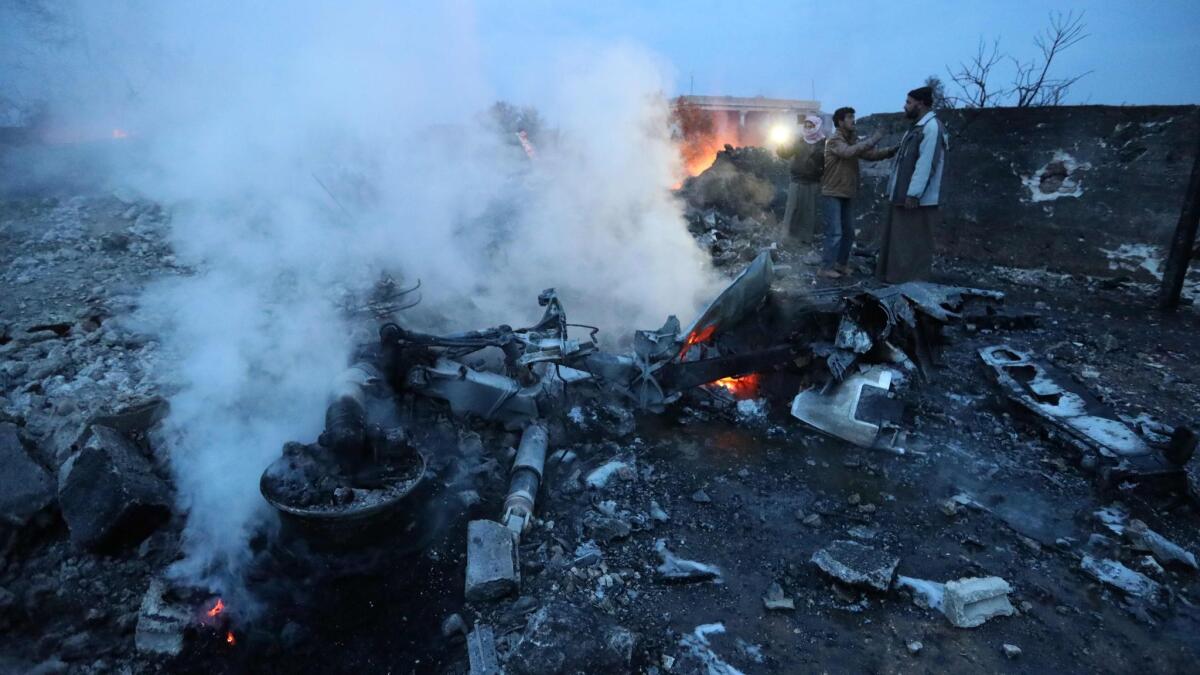Syrian rebels shoot down Russian warplane, kill captured pilot

- Share via
Reporting from BEIRUT — For more than two years, Russia’s warplanes have operated with relative impunity over Syria’s skies. But on Saturday, the downing of a Russian Sukhoi-25 jet was a reminder that Moscow’s involvement in the civil war is not without cost.
The pilot had bailed out of the plane before it crashed over the northwestern Syrian province of Idlib, said the Russian Defense Ministry, landing in an area controlled by the Organization for the Liberation of Syria, previously known as the Al Qaeda-affiliated Al Nusra Front.
Idlib, the primary redoubt of rebels fighting against Syrian President Bashar Assad, has been the site of a Russian-backed government offensive since December. Areas of it have been designated as part of a de-escalation zone.
The pilot was killed “while fighting against terrorists,” continued the statement, adding that preliminary information indicated the plane may have been downed by a portable air-defense system, or MANPADS, antiaircraft missiles the rebels have tried for years to obtain.
“The Russian center for reconciliation of warring sides in Syria alongside the Turkish side, responsible for the Idlib de-escalation zone, are taking steps to retrieve the Russian pilot’s body,” the ministry said, according to Russia’s Tass news agency.
Mahmoud Turkmani, a militant commander in the Organization for the Liberation of Syria claimed responsibility for the downing, saying in a statement released to the group’s media channel that the aircraft was attacked while it was conducting a strike over the city of Saraqeb, some 10 miles southeast of Idlib.
“Let the invader criminals know that our skies are not a walk in the park for them,” Turkmani said. “They will not pass through it without paying the price.”
Another group, Jaish al Nasr, said it had shot down the plane using anti-aircraft guns.
Pro-opposition activists on social media released multiple videos purporting to show the moment the plane was hit. It streaks past as the thuds of heavy machine gun fire can be heard.
In one video, a missile is seen from the side arcing upward toward the plane. Another video shows a flash near its tail. It continues to fly for a distance before descending toward the ground.

One clip depicted a jubilant crowd gathering around the burning wreckage of the plane, with the camera lingering over the red star insignia on the wing and the charred remains of a rocket pod.
There also were images purporting to show the pilot’s corpse, his head bloodied and people cheering when they identify him as Russian.
In the aftermath of the attack, Russian forces retaliated with “massive high-precision weapons strikes” on the location where the missile was said to have been launched, said the Defense Ministry, adding that more than 30 militants from the Organization for the Liberation of Syria had been killed.
Russian air support has been a vital component for the government’s anti-rebel campaigns, with Moscow’s intervention in the Syrian war in September 2015 widely seen as the moment the conflict turned in Damascus’ favor.
The killing comes almost two months after Russian President Vladimir Putin had declared victory in Syria. He had ordered a drawdown of forces.
Despite being deployed throughout the country, Russian troops have sustained relatively few casualties, with 46 soldiers killed since September 2015, according to a report by TASS.
Aircraft losses have been meager as well; Russian pilots do not have to contend with the aging airframes and low-precision weaponry that their Syrian counterparts have faced, and which have made them vulnerable to rebel attacks.
But if a MANPADS attack is confirmed, it could signal a significant upgrade in the rebels’ arsenal.
For years, the opposition clamored to get surface-to-air missiles to stop government airstrikes on opposition-held areas.
But Western governments arrayed against Assad blocked the entry of what were called “game-changing weapons” into the battlefield, fearing they would fall into the hands of Islamist groups, especially the Organization for the Liberation of Syria.
Bulos is a special correspondent.
UPDATES:
1:10 p.m.: This article was updated throughout with staff reporting that include additional details.
This article was originally published at 10:25 a.m.
More to Read
Sign up for Essential California
The most important California stories and recommendations in your inbox every morning.
You may occasionally receive promotional content from the Los Angeles Times.














